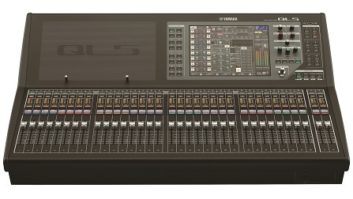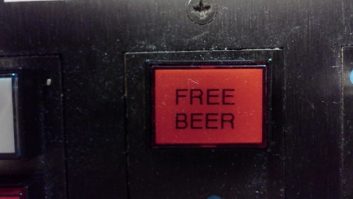Some time back, Frank Hertel of Newman-Kees RF Measurements sent us a tip on making a front panel for home-built equipment. He subsequently found an interesting and relevant website, www.frontpanelexpress.com.
The company’s software is free and might lend itself to personal projects. The software certainly will facilitate fabricating a custom panel for your project(s). In addition, Front Panel Designer software has the option of exporting its drawings and engravings as DXF files.
Many CNC software programs can use DXF drawings to generate “G” code, a simple text type of file that a CNC machine uses to move and position a spindle cutter head in the “X”, “Y” and “Z” axii and thus, in this case, fabricate the front panel and its engravings.

Fig. 1: An image from the Front Panel Express website.
Further, the DXF files can be converted to JPG files, which are used by other photo and drawing software programs. This expands the possible uses for the software.
If you take advantage of this site, send us a photo of your finished product!
****
We have a lot of experimenters reading this column. Thanks, Frank, for the useful software tip.
This is a good time to start planning for colder weather.
There’s nothing as frustrating as responding to an emergency call to a transmitter site only to find the lock on the gate frozen. It’s far worse when your station is off the air.
Rick Sewell, engineering manager of Crawford Broadcasting Chicago, has more than once held a lock in sub-freezing temperatures and used the heat from his hands to thaw it, though he would not recommend the method unless you don’t mind frostbitten fingers!
He has tried a lot of other tricks to thaw locks; one is a torch, but if you have wind, you may have a fight trying to get the torch lit.
Rick now favors renewable hand warmers. He discovered one of these in his Christmas stocking. He put it in the car, so that he had it handy for when he was working outside and needed some heat. Not too long after, he was confronted with a frozen lock at a transmitter site gate. The light bulb went off. Rather than risking his fingers, he got the hand warmer, activated it and put it in his glove to cover the lock. Rick let it do its work for about five minutes. The lock snapped open, and no frozen fingers.
Since then, Rick has upgraded his procedure to using an insulated sock rather than his glove.
Renewable hand warmers use a liquid mix of water and sodium acetate. To activate the warmer, you simply snap the metal disc inside the warmer and the liquid begins to turn solid, with the resulting chemical reaction putting out heat. The temperature is between 120 to 130 degrees. This is warm enough to thaw a lock inside a sock.
The renewal process for the hand warmers isn’t difficult. You just need to boil the hand warmer for about 10 minutes. Boiling returns it to its liquid state, ready for the next frozen lock.
It is a lot better than frozen fingers or fumbling around with a torch. You can find these renewable hand warmers at sources of camping supplies like REI or Amazon.
****

Fig. 2: A white dot identifies the topside of a USB plug.
Terry Skelton is a senior account executive for Clear-Com LLC and covers military, aerospace and the government. Terry sends in an idea that can spare you frustration, especially in low-light situations. He uses a white Sharpie-brand paint pen to put a white dot on the “up” side of all his USB plugs so he can tell at a glance which side is which.
The raised USB symbol on the black connector can be hard to see. The dot lets you orient the connector properly, as shown in Fig. 2.
This little tip will save you time and prevent you from forcing the plug when it’s upside-down.
****
The following is just one of many responses to our mention of the Allied Catalogs website (July 15, 2015 issue). One engineer went online to check out the catalogs and looked over the 1954 catalog. He remembers all the items on his wish list — including the TV camera on the last page. The pages included all the things he wanted but that were way too expensive for him with his paper route income.
On page 217, Fig. D shows the Knight Wireless AM Broadcasters Kit. This is what this engineer, and many others, used for their pirate stations, hooking up a 1/4-wavelength “long-wire” antenna to provide coverage of at least several blocks.
The website is www.alliedcatalogs.com.
****

Fig. 3: Here’s a novel method of cooling down a dummy load.Once, I worked at a station that aired “kickers,” feature stories about the lighter side of the news. Fig. 3 is our “kicker” for this column, and I hope it brings a laugh.
So, this engineer was having trouble keeping a dummy load from overheating. His solution? Stick it in the freezer! Contributed anonymously.
Contribute to Workbench. You’ll help your fellow engineers and qualify for SBE recertification credit. Send Workbench tips to [email protected]. Fax to (603) 472-4944.
Author John Bisset has spent 46 years in the broadcasting industry and is still learning. He handles West Coast sales for the Telos Alliance. He is SBE certified and a past recipient of the SBE’s Educator of the Year Award.





